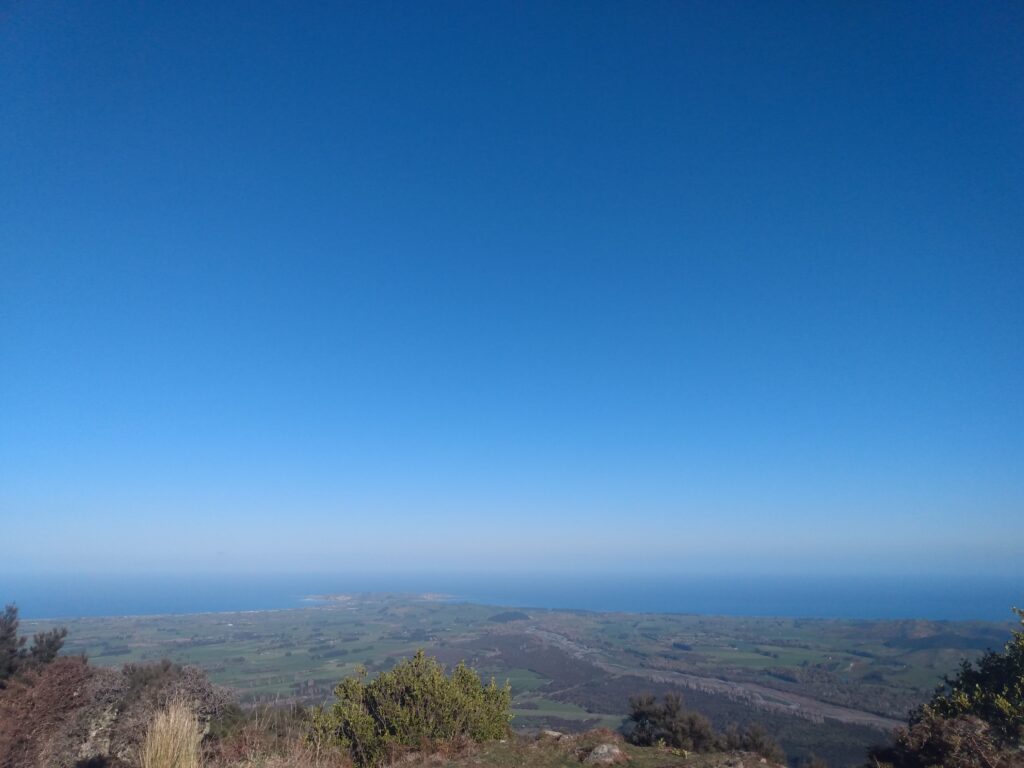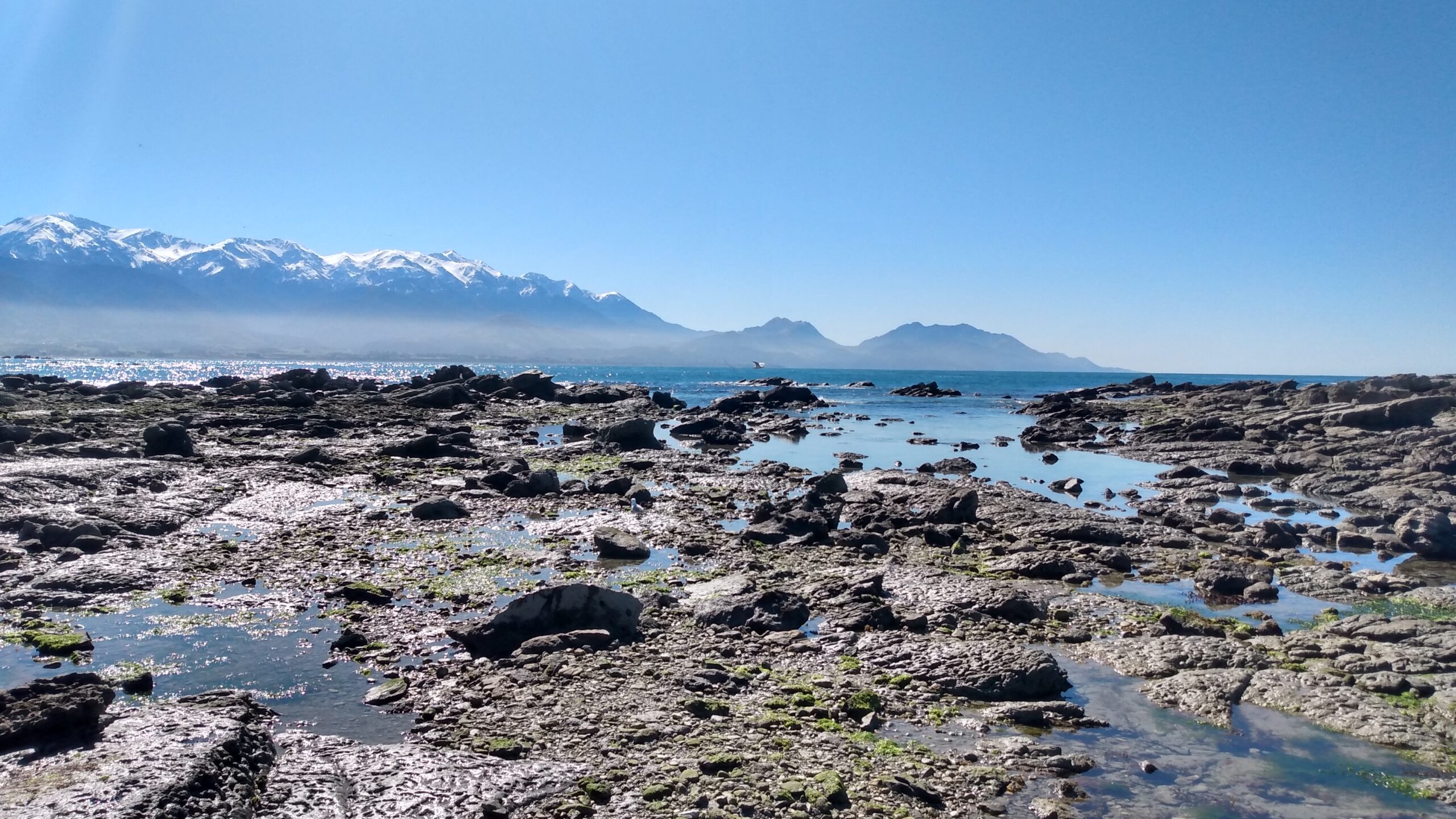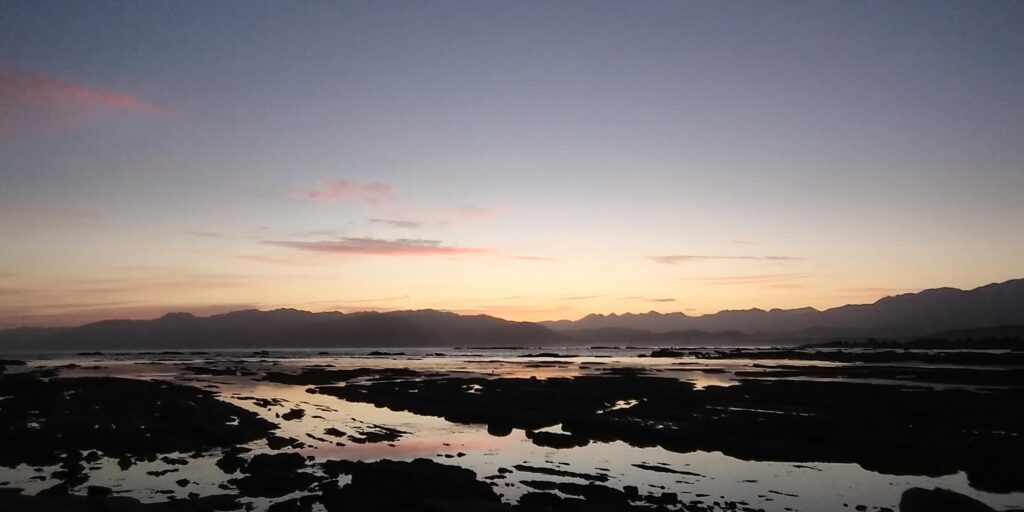Signed, Sealed, Delivered
NOTE: The date of this post is actually September 13th, 2020. Because I STILL haven’t found a way to fix the bug that dates the posts to the date of their last update instead of their original publication date.
I spent way too long trying to come up with a title for this post, because I was desperate to find a way to work the word, “seal” into it (more on why later). As it is, this is a pretty lame attempt, as “signed” and “delivered” have nothing to do with anything, but hey, “sealed!” (Is the suspense killing you yet?)
Anyway, let’s get down to business, shall we? In my last post, I promised some more genuine travel posts, so this is my first attempt. Strap in, because it’s going to be a long one. Also, just a note: though I’d love to be able to claim credit for the photos in this post, the credit goes to R, who somehow manages to take amazing, ready-for-their-nature-mag photos with a camera phone; I, on the other hand, am hard pressed to keep my fingers out of the shot.
We’ve traveled quite a bit around the South Island of New Zealand over the past few months, but we chose to return to Christchurch (home of our lockdown pad and overall pretty cool little city) for a few weeks. This past weekend, we took a short road trip to Kaikoura, which is a small town about two and a half hours north of Christchurch, located on the Kaikoura peninsula, famous for whale watching (spoiler alert—we took no whale watching tours, though I did overhear someone at our hotel saying that she had taken one and had seen a humpback), seals (no, that’s not why I gave this post its name; patience, grasshopper), and bird colonies.
Kaikoura is a sleepy little town consisting of one main street of shops, cafes, and restaurants, and a commercial strip of takeaway places, gas stations, lodging, and a secondhand bookshop (which apparently also sells secondhand home decor and clothing, as well) called Novel Findings, which I looked at longingly whenever I passed but never actually went into (still giving it a shout-out, though, because books!).
Though there are a number of spectacular things about Kaikoura, one of the most spectacular, as far as I’m concerned, are the snowcapped mountains that overlook the sea. Snow capped mountains alongside a lake? Expected, no matter how beautiful (see Queenstown), but alongside the sea? Less expected, and way more striking.
My first impression of Kaikoura was that it’s both hard and soft—the coastline is jagged and rocky, windswept and rugged, with no soft golden sand or warm inviting shallows, but juxtaposed with that are the dazzling mountains cloaked in a pure, powdery white that shimmers in the sun and the extensive, rolling green fields above the cliff tops (to me it looks like it should be wine country, though it’s really not–that’s a bit further north).
Currently, getting into and out of Kaikoura is easy enough during the day, though you can expect some delays due to the road construction going on; between 7 p.m. and 6 a.m. most days, State Highway 1 is closed, which makes the town feel a little bit like an island in the evening and enhances its sleepy, dreamlike quality. At first I thought the construction was due to earthquake damage to the highway—back in 2016, there was a massive two-minute earthquake (7.8 on the Richter scale, though that doesn’t mean much to me, as I have virtually nothing to compare it to apart from a fluke earthquake in Virginia a couple of years ago and the odd few-second quake here in Christchurch) and tsunami that left Kaikoura with no way in or out by car; tales of stranded cows, misplaced trains, months-long power outages, grassroots lobster breakfasts, Kiwi resilience, and air and sea evacuations abound—but apparently it’s so that they can install rockfall protection canopies, which makes sense, given that this area is rife with towering rock walls.
Our first night there, we went for a walk along the beach, and then headed off on foot to the Point Kean carpark, which overlooks some of the rocky coastline that make this area such a draw for seal colonies. There are no streetlights once you get out of the town, so when a passing car’s headlights revealed to us a boardwalk along the side of the road, I felt delighted and hopped on without a thought. Walking along, the sound of waves crashing off to our left, the smell of salt in the air (that’s another thing about Kaikoura—it doesn’t just smell like the sea, it smells like a particularly briny sea), the breeze against my face, I felt lucky and content; when the whole world feels upside down, these small moments where all seems right and well and peaceful are all the sweeter.
As the boardwalk rounded a bend into the carpark, I, who was walking in front, saw what I thought was a hole, some sort of break in the path ahead. It was a broad stretch of blackness spanning the width of the boardwalk (we weren’t using flashlights), and as I attempted to puzzle out whether I would need to get back onto the road or if the path ahead was navigable, a vicious-sounding snarl emerged from the darkness. I imagined that it might be a dog, but I didn’t feel particularly frightened or threatened until the second snarl/hiss, and my entire body was suddenly on the alert as my brain registered danger. The black shape in front of me shifted, sooo…no hole after all. Instinctively, I stepped back, forgetting that I was on a boardwalk, and so my foot caught air, and I toppled straight onto my back on the pavement.
I lay there for a moment, feeling disoriented and panicky, waiting for some sort of wild animal attack that I was now sure was imminent, but nothing came, except for R, who helped me up (no real injuries, thank goodness, as I’m not exactly itching to test New Zealand’s healthcare system as a visitor) and who informed me that my “hole” was a seal sprawled out across the boardwalk in the dark. I had no idea they could make noises so threatening, and as R flicked on his phone flashlight and trained it on my first up-close-and-personal seal, I felt wary. Do seals charge? Do they attack people? Do they suddenly become Olympic-speed sprinters once on land? To me, seals were always cute and cuddly and undeserving of being clubbed to death on Anarctic ice, but suddenly they took on vicious overtones in my mind. “American Tourist Survives COVID, Dies in Freak Seal Attack,” or “First Ever New Zealand Death by Seal” were some of the many headlines that flashed through my mind.
R kept the light on it, and as it rocked back and forth and pulled the upper half of its body off of the boardwalk, seemingly agitated (And why wouldn’t it be? Presumably it was enjoying a lazy, peaceful night to itself when two humans crept up on it the dark and scared it half to death.), I pondered how much distance I needed to put between myself and it (the next day, when we returned to this spot, I would have my answer—10 meters, according to the signs visible in the sunlight; 20 meters, according to the display at one end of the peninsula walk). Later, as we picked our way along the coastal rock platforms in the dark, a lone seal cry floated through the air, and my body tensed reflexively with terror and I emitted a short, sharp, “No!” as I peered out into the darkness, half-expecting to see a slick, whiskered head rushing towards me out of the night, jaws agape.
So, that, at long last, is the story behind the title of this post. The next day, when we returned to the carpark— in a car this time, which was all for the better, since “my” seal was still there, perhaps plotting its revenge—we opted to take the sea-level track along the coast, which passes by both bird and seal colonies (roped off for the protection of both the wildlife and the humans; seals, do, in fact, bite, and their teeth are no joke). Seals galore! I am not great at estimating numbers, but there are many hundreds, if not upwards of a thousand. They are everywhere, sprawled facedown in the sun or concealed (or should I say consealed™—R gets all the credit for that one) among the most uncomfortable looking of rock perches, looking just as cute and cuddly and peaceful as could be, with no hint of their viciousness. The air is thick with the screams of seabirds, and the whole coastline in this area feels alive with noise and wildlife.
Eventually we reached the end of the track, but instead of turning around, we clambered out into a rocky cove to have lunch. There were seals here to which we had no choice but to get wayyyy closer than 10 meters (it’s a little like trying to dodge landmines—how can you possibly keep 10 meters away from every seal when they pop up anywhere and everywhere?), and as we approached the first one, it became agitated and started hissing, which provoked a fear response in me (nothing gives you a healthy fear of seals like nearly stepping on one in the dark, I guess), and other seals in the area gave us unsettling (to me) death stares as we passed (one in particular actually craned its head around to peer at us from his place behind a rock; “You better keep moving,” I imagined it thinking, as “Private eyes/they’re watching you/they see your every move” played on a loop in my mind).
As we luncheoned among the rocks, watching seals roll lazily in the waves (one truly seemed to be just happily logrolling its way out to sea), I felt limited in my ability to truly appreciate the spectacular beauty of the place, preoccupied as I was with the idea of a seal sneaking up on me from behind, ninja-style, or a group of seals coming together for a coordinated frontal attack (fun fact: a group of seals can be called a bob).
The next day saw us attempting part of the Mt. Fyffe walking track. This is a relentless uphill trek along a 4WD access road, and swiftly I realized just how much my cardiac fitness and lung capacity has diminished. As sweat poured off of me and I paused lengthily about twenty minutes in because I truly thought I might throw up, I attempted to distract myself with views of the peninsula and surrounding land (and to be fair, these views are genuinely distracting at times). Later, when R told me I could rest at a small bench along the trail while he continued up to a lookout area, I mentally refused to be a loser and spent much of the rest of our walking time playing Steve Prefontaine quotes in my head (a favorite trick from when I was a long-distance runner). Mountaineer, I am not. Anyway, though we didn’t summit Mt. Fyffe (and I don’t even know if we could have, as it’s still technically winter and the top was covered in snow), the view from the lookout was worth it.



Our last day was my favorite, largely due to the weather. The sky was a beautiful, pristine blue, with no clouds in sight. The mountains soared above the ocean, the sun glinted blindingly off the water, and even the dried seaweed covering the rocks caught the light in a way that gave the appearance of a landscape swathed in gold leaf. It was cool in the shade, but otherwise warm enough for me to remove my jacket and walk in my tank top.




R wanted to walk to some of the furthest rocks, and, still intent on not being a loser, I decided to follow, though I had some serious second thoughts once I reached some of the rocks closer to the sea, as they were covered with wet seaweed and at times it felt like being on an ice rink. Still, I soldiered on, and was (as usual—this is one of the great benefits of traveling with R—he will push me to do things I would likely not even think to do on my own, and which frequently terrify me in the moment, but which ultimately turn out to be some of the coolest experiences) rewarded with a perch right above the crashing waves.
After putting to rest my fear that the tide was coming in and that we’d be swept away (the rocks around us were clearly under water during high tide, hence the wet seaweed everywhere; nevertheless my fear was unfounded, as by great luck we’d timed things perfectly and had arrived around an hour before low tide), watching the waves spill over the rocks around us, the mountains off to our left, seals basking in the sun on both sides of us (note: this does not mean we were sharing a rock with friendly seals in some cutesy Doolittlean paradise, only that seals were visible on near rocks—indeed, we’d disturbed a few as we’d made our way to our spot, and some of them had hurriedly lumbered off; they are, in fact, much faster than you might expect), I had another “how amazing is my life” moment.
This moment extended through our walk along the Kaikoura Peninsula Walkway. High above the ocean, looking out onto the same spots we’d earlier traversed on the ground level, the sun almost unbearably bright and direct (I, a sunscreen addict who has worn sunscreen daily since middle school and who walked the streets of Italy and Bali with an air of sun-invincibility, actually wondered if my sunscreen could hold up to this), I was filled with a deep sense of peace and happiness. Rolling hills of green and grazing farm animals were off to our right, open air and sea were off to our left. There’s something beautifully idyllic about the contrast between the rocky, primitive coastline with its crashing waves and sharp brackishness (there were many times during our stay in Kaikoura that I was reminded of the rugged landscape of Mykonos), and the sweetness of the pastoral farmlands with their green, green grass and overall promise of wholesomeness.
We did not do the entire walk, but turned around once we had crossed over into the south bay of the peninsula. Overall, it was one of those perfect days where I felt immeasurably happy, and my good mood was boosted further as we drove out of town. Every construction worker that mans the stoplights along the road construction sites waves when you pass (at first I thought this was a charming quirk exclusive to a few workers; later it seemed obvious that waving was part of the job description). I found this charming and delightful, and it wasn’t long before I began to enthusiastically return these waves, and I even, at one point, waved at a worker who was clearly not a public-facing worker.
Later, when I was driving through a small town (the fact that I can drive on the left side of the road while also steering from the left side of the car consistently feels like a gold star accomplishment to me, where I feel both impressed with myself and exhilarated, as though driving a car successfully is a particularly profound achievement of the kind you want to brag about in blog posts), I felt delighted all over again when the automatic speed checker (you know, the kind that you’ll often see at the side of the road in the US, clocking every passing car’s speed and displaying it for all to see) registered my speed and displayed “thank you” under it.
I’m totally going to end this on a cheesy, feel-good note, because as I typed that last sentence, what struck me was that the “thank you” should really be on my end. Thank you to New Zealand, for offering me a safe and beautiful home during this crazy time, for reminding me time after time how much I have to be grateful for, even when I don’t always acknowledge it. And also, though I feel like I’ve given seals some shit in this post, I still think they’re super cute, and just because I have a healthy newfound respect for their ability to protect themselves doesn’t mean I’ve renounced my former assessment of them. Getting to see so many seals, so close, was truly amazing, and I’m happy that they are so well protected here. So, thanks, Kaikoura. Maybe I’ll see you again sometime.


